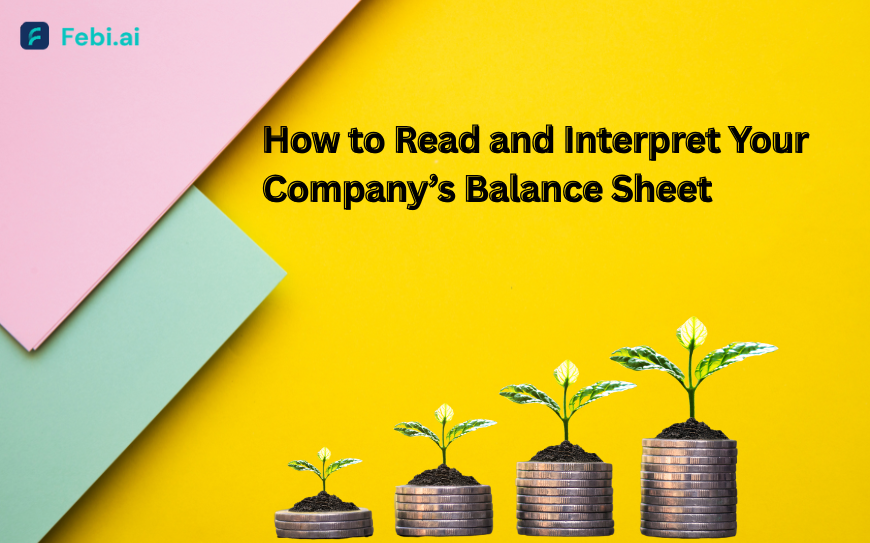How to Read and Interpret Your Company’s Balance Sheet

Strong 8k brings an ultra-HD IPTV experience to your living room and your pocket.
Understanding your company’s financial health is crucial for making informed decisions—and one of the most powerful tools to do this is your balance sheet. Often referred to as the statement of financial position, the balance sheet provides a snapshot of what your business owns, owes, and the owner’s stake at a particular point in time.
In this article, we will explore how to read and interpret a balance sheet effectively, whether you’re a business owner, accountant, investor, or finance student.
What Is a Balance Sheet?
A balance sheet is a financial statement that shows:
- Assets: What your company owns
- Liabilities: What your company owes
- Equity: The owner's interest in the company
The key principle behind a balance sheet is the accounting equation:
Assets = Liabilities + Equity
This equation must always be in balance, hence the name balance sheet.
The Structure of a Balance Sheet
A typical balance sheet is divided into two main sections:
1. Assets
These are resources owned by the company that have economic value.
Assets are usually divided into:
- Current Assets (expected to be converted to cash or used within one year):
- Cash and cash equivalents
- Accounts receivable
- Inventory
- Prepaid expenses
- Non-Current Assets (held for more than one year):
- Property, plant, and equipment (PPE)
- Long-term investments
- Intangible assets (like patents, trademarks)
2. Liabilities
These are obligations the company must pay in the future.
Liabilities are also divided into:
- Current Liabilities (due within one year):
- Accounts payable
- Short-term loans
- Accrued expenses
- Non-Current Liabilities (due after one year):
- Long-term loans
- Bonds payable
- Deferred tax liabilities
3. Equity
Equity represents the owner's claim on the company’s assets after all liabilities are paid.
Components may include:
- Share capital or owner's capital
- Retained earnings
- Reserves
Step-by-Step Guide to Reading a Balance Sheet
Step 1: Identify the Reporting Date
The balance sheet provides a snapshot of the company at a specific point in time, unlike the income statement which covers a period.
Check the reporting date (e.g., “As of March 31, 2025”) to understand what the numbers represent.
Step 2: Assess Total Assets
Look at the total current and non-current assets. This shows what the company owns.
Ask yourself:
- Are current assets sufficient to cover current liabilities?
- Has the asset base grown compared to previous periods?
For instance, a company with increasing cash reserves or inventory could be experiencing healthy growth.
Step 3: Review Liabilities
Now examine the liabilities. A business with excessive debt might be at risk, especially if revenue is inconsistent.
Compare:
- Current liabilities vs. Current assets (Liquidity check)
- Total liabilities vs. Total equity (Leverage check)
Use the Current Ratio:
Current Ratio = Current Assets / Current Liabilities
A ratio above 1 suggests good short-term financial health.
Step 4: Analyze Equity
Look into retained earnings and shareholder’s equity. If retained earnings are growing, the company may be profitable and reinvesting in itself.
Compare total equity over multiple periods. Increasing equity can mean profits are being retained or new investments are made by owners/shareholders.
Step 5: Ensure Balance
Make sure:
Assets = Liabilities + Equity
If this doesn’t add up, there’s likely a recording error or issue in accounting.
Key Financial Ratios from the Balance Sheet
You can interpret the balance sheet more deeply using financial ratios:
1. Current Ratio
Measures liquidity (ability to pay short-term debts)
Formula: Current Assets / Current Liabilities
A ratio below 1 may indicate financial trouble.
2. Debt-to-Equity Ratio
Measures how much debt a company uses to finance its operations
Formula: Total Liabilities / Shareholders’ Equity
A high ratio means higher financial risk.
3. Return on Equity (ROE)
Shows how efficiently a company uses equity to generate profit
Formula: Net Income / Shareholders’ Equity
Higher ROE suggests better financial performance.
4. Working Capital
Indicates available short-term assets to meet short-term liabilities
Formula: Current Assets – Current Liabilities
Positive working capital = liquidity safety
Negative working capital = possible cash flow issues
Common Red Flags in a Balance Sheet
Excessive Accounts Receivable
- May indicate slow collections or bad credit policies.
High Debt Levels
- Risk of default or high interest burdens.
Declining Retained Earnings
- May reflect consistent losses or excessive dividend payouts.
Inventory Build-Up
- Could signal slowing sales or poor inventory management.
Why Balance Sheets Matter
A balance sheet helps you:
- Understand solvency and liquidity
- Make decisions about growth or investment
- Prepare for loans or credit approval
- Compare financial performance over time
- Evaluate risk in case of economic downturns
It also complements other financial statements like the income statement and cash flow statement to provide a complete financial picture.
Tips for Business Owners
- Compare over time: Review past years to spot trends.
- Benchmark against industry: Know how your financials stack up.
- Review quarterly: Don’t wait until year-end to check your balance sheet.
- Seek advice: If you're unsure how to interpret it, consult a financial advisor or accountant.
Conclusion
The balance sheet is more than just numbers—it's a powerful snapshot of your company's financial story. By learning how to read and interpret it, you gain critical insight into your business’s financial position, strengths, and risks. Whether you're planning to grow, invest, or just stay afloat, mastering your balance sheet is a skill every business owner or financial manager should develop.
Note: IndiBlogHub features both user-submitted and editorial content. We do not verify third-party contributions. Read our Disclaimer and Privacy Policyfor details.







